Meniscus tear, meniscus rupture, meniscus lesion
Table of contents
How does a meniscus tear occur?
The meniscus serves as a shock absorber between the thigh bone (femur) and the shin bone (tibia). It increases the contact area between the two joint partners and distributes the load more evenly. It also stabilises the knee joint during movement. The knee has an inner and outer meniscus. Both have an approximately crescent-shaped form and consist of fibrocartilage.
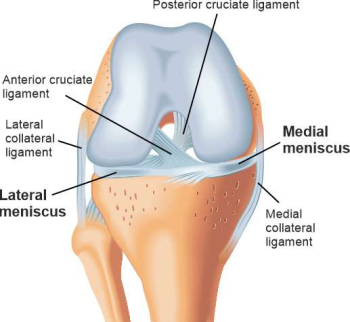
A meniscus tear or meniscus rupture is one of the most common injuries in the knee joint. The cause of a meniscus tear can be both an acute injury (e.g. due to an accident) and degenerative damage (due to age or wear and tear). The inner meniscus is much more frequently affected by injuries than the outer meniscus.
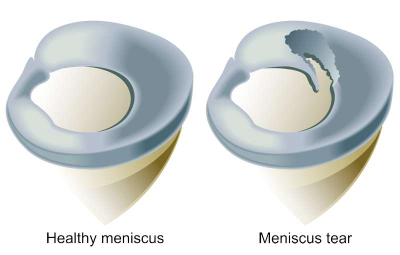
Meniscus tear forms
With regard to their direction of progression, meniscus tears are divided into:
- Radial tear
- Longitudinal tears
- Diagonal tears (flap tear)
According to the spatial level, meniscus tears are divided into:
- Horizontal tears
- Vertical tears
In addition, there are various special forms:
- Bucket-handle tear
- Complex tears
- „Flipped meniscus“
You can find more information on the classification under this link: Meniscus-Update
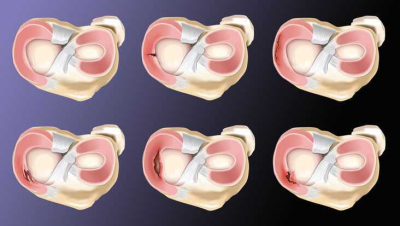
Symptoms of meniscus tear
In the case of an acute meniscus tear, there is usually sudden, stabbing pain that is often accompanied by swelling of the knee joint. Even the smallest movements can be extremely painful. Sometimes there can also be a restriction or blockage of movement in the knee joint. The symptoms of a meniscus tear due to wear and tear tend to start gradually. Signs of this can be load-dependent pain when walking or running, which is sometimes stronger and sometimes weaker. Sometimes you may also hear a snapping or cracking sound. If left untreated, a meniscus tear can lead to cartilage damage due to constant rubbing against the joint cartilage, which in turn can trigger pain in the knee joint and, in the long term, wear and tear (osteoarthritis).
Diagnosis for a meniscus tear
Through a detailed discussion with the patient about the mechanism of the accident or the occurrence and severity of the pain, as well as a thorough clinical examination, the doctor can usually make the diagnosis of a meniscus tear. To confirm the diagnosis and to clarify possible concomitant injuries, a magnetic resonance imaging (MRI) is recommended. This can also be used to assess the exact location of the tear, the size and the shape of the tear. This plays an important role for the further therapy decision.
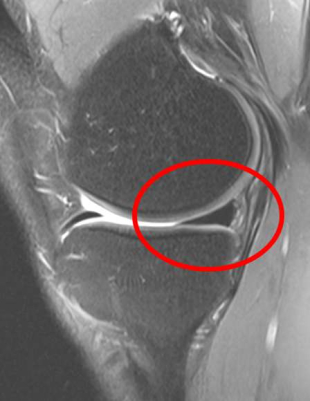
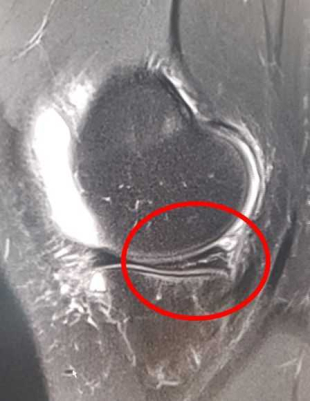
In the case of a degenerative meniscus lesion, MRI distinguishes between four grades. Grade 3 and above is a meniscus tear.
| Grade 1 | the meniscus lesion is centrally located, small and punctate |
|---|---|
| Grade 2 | the meniscus lesion runs horizontally but does not reach the meniscus surface |
| Grade 3 | the meniscus lesion is ligamentous, larger than in grade II and reaches the meniscus surface, it is called a meniscus tear |
| Grade 4 | the meniscus lesion is complex, the meniscus is torn several times |
Treatment for meniscus tear
The therapy of a meniscus tear depends on various factors. In addition to the size of the tear, the shape of the tear, the localisation and existing concomitant injuries, the age of the patient, the sporting activity, the severity of the complaints and the time of the injury play an important role and must be taken into account when deciding on the therapy.
In principle, a meniscus tear can be treated both conservatively, i.e. without surgery with physiotherapy and medicinal pain therapy, and surgically in the course of an arthroscopy.
In surgical therapy (arthroscopy), either a part of the meniscus is removed (partial meniscus resection) or the meniscus tear is sutured. The aim of surgical therapy is to prevent the meniscus from tearing further and causing further damage to the joint cartilage. If a part of the meniscus is torn off and moves around in the joint as a free joint body (joint mouse), this can lead to restricted movement and joint blockages. In this case, arthroscopic removal of the joint body is necessary.
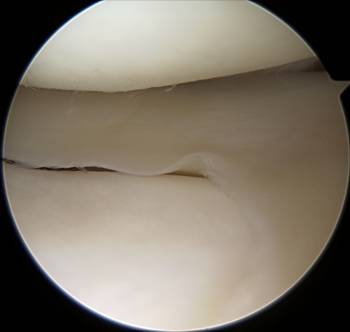
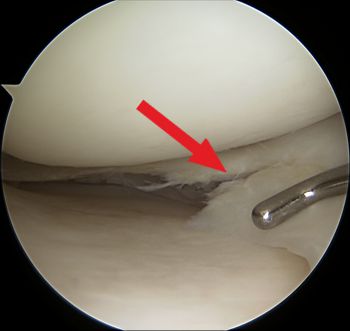
Partial meniscus resection
Partial meniscus resection is the most commonly used surgical treatment for a meniscus tear. The procedure is performed as part of an arthroscopy. The torn part of the meniscus is removed with an arthroscopic punch and the remaining meniscus is smoothed. Meniscus tears in the poorly perfused zone of the meniscus, where no healing can take place, are particularly suitable for this method.
Meniscus suture
A meniscus suture is also performed arthroscopically. Using special suturing techniques, the torn part of the meniscus is sutured and the meniscus is restored to its original shape. The advantage of a meniscus suture is that the meniscus is preserved in its entirety and can continue to perform its function. Studies have shown that even a small reduction in the size of the meniscus leads to an increase in stress in the joint cartilage and accelerates the development of arthrosis. Suitable for a meniscus suture are especially fresh meniscus tears in the well supplied with blood zone of the meniscus. The basic prerequisite for a meniscus suture is that the meniscus tear can heal over time, as the suture itself only holds to a limited extent. This requires a good blood supply, stable ligament conditions and a straight leg axis. A disadvantage of meniscus suturing is that, in contrast to partial meniscus resection, a more protracted follow-up treatment with partial or unloading of the leg is required and the risk of a new tear (rerupture) is relatively high despite all caution.
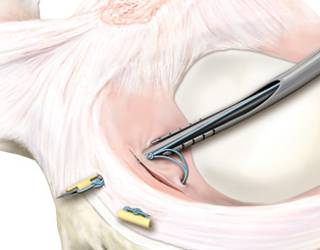
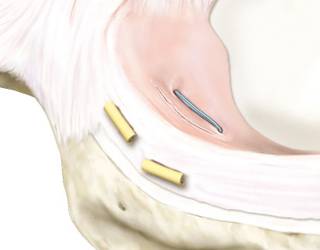
Aftercare for a meniscus tear
After a partial meniscus removal, the leg may immediately be loaded to the pain limit. Forearm crutches to reduce pain are usually only necessary for a few days. Cycling and ergometer training can be started 2 weeks after the operation. Running is allowed after 4-6 weeks, ball sports and contact sports after 6-8 weeks.
After a meniscus suture, depending on the size of the tear, relief or partial weight-bearing of the affected leg and wearing of a splint is necessary. The start of sports activities (running, ball and contact sports) also depends on the size of the tear and ranges between 3 and 6 months.
Frequently asked questions about meniscus tears
How long do I have to stay in hospital after meniscus surgery?
In most cases, meniscus surgery can be done in a day clinic. This means that you can go home on the same day as the operation, after you have recovered from the operation and the anaesthetic. However, it is of course also possible to stay in hospital overnight after the operation.
How long do I have to use crutches after meniscus surgery?
After a partial meniscus resection, weight-bearing up to the pain threshold is usually possible immediately. Since the joint fluid is flushed out during the operation and must first form again, the use of 2 forearm crutches is recommended for approx. 1 week.
After a meniscus suture, the operated leg must not be fully loaded for a few weeks to prevent the meniscus suture from tearing and to allow the meniscus tear to heal. Depending on the size and shape of the tear, 2 forearm support crutches should be used for 4-6 weeks.
Does every meniscus tear require surgery?
Not every meniscus tear requires surgery. A distinction can be made between different forms and degrees of meniscal damage. Tears that do not reach the surface of the meniscus can usually be treated very well without surgery (conservatively). In these cases, physiotherapy is usually used to achieve freedom from symptoms.
Meniscus tears that reach the surface of the meniscus carry the risk of causing cartilage damage through constant friction on the cartilage. For this reason, they should be operated on before cartilage damage can occur. A tear that leads to entrapment symptoms or a blockage of the joint should definitely be operated on, as blockages can occur again and again and cause considerable cartilage damage.